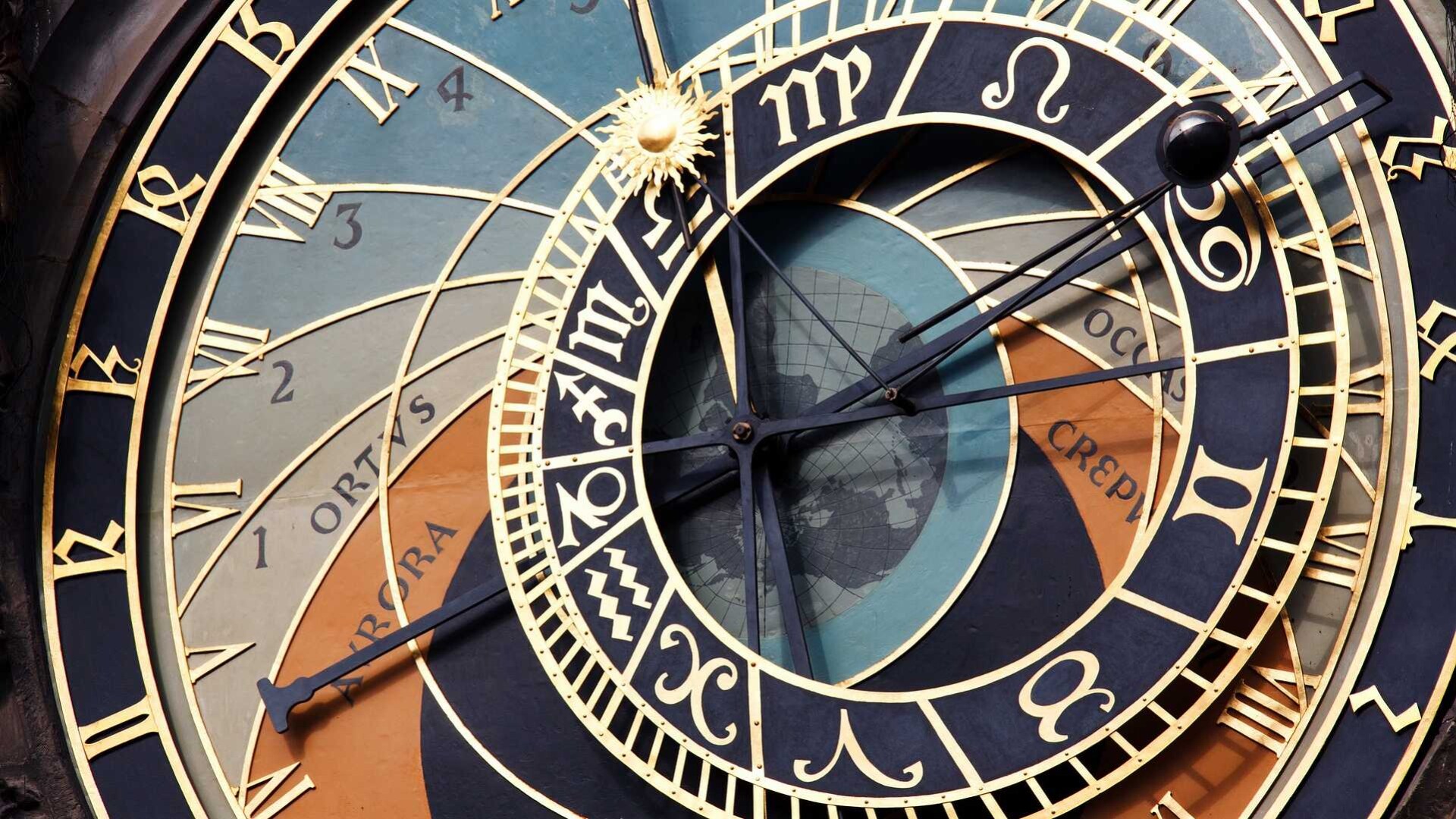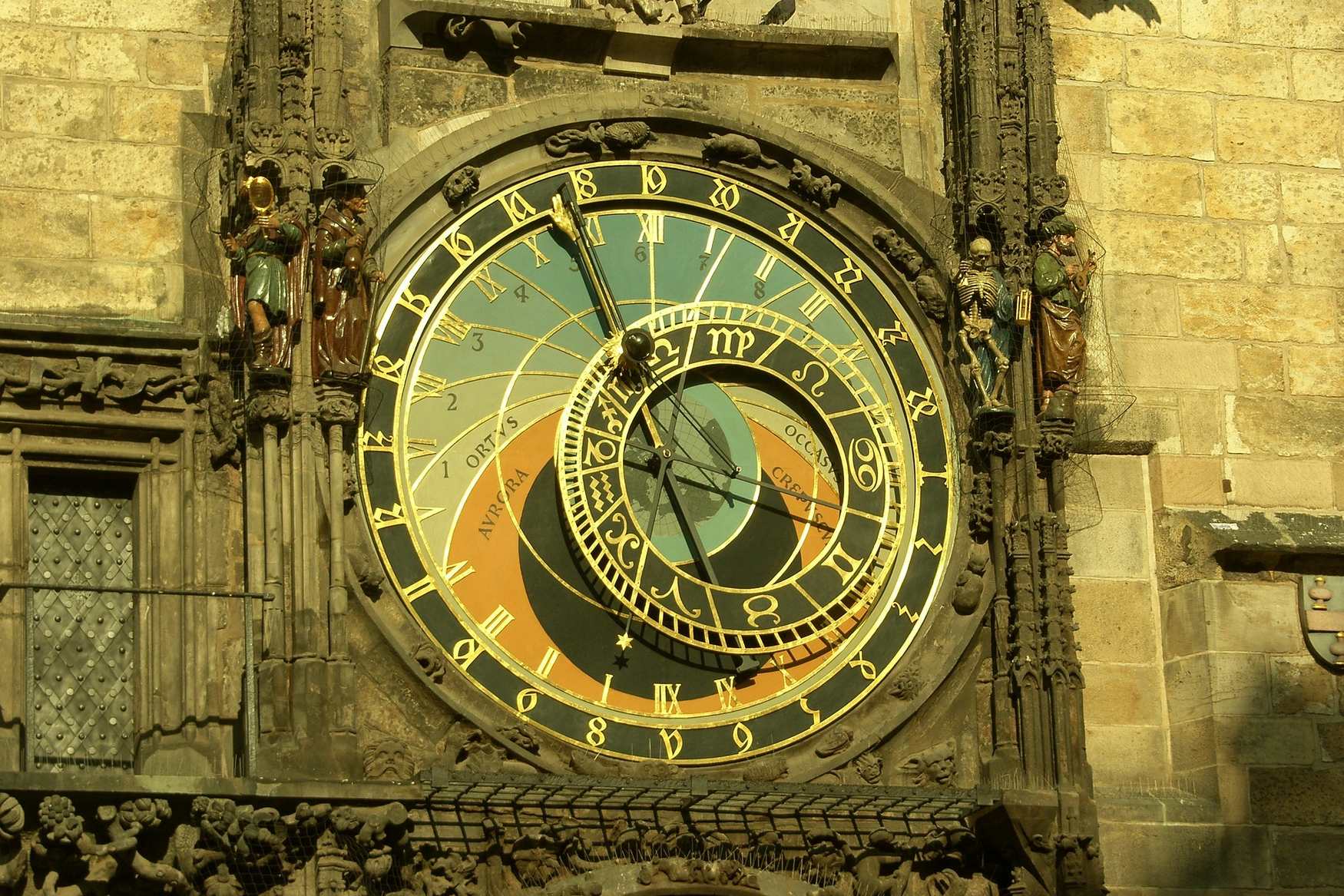- What is the Prague Astronomical Clock Known for?
- Why It Might Be Interesting for Kids
- History and Background
- Architectural Details of the Astronomical Clock in Prague
- Astronomical Features
- Cultural Significance
- The Orloj's Symbolism
- Best Time to Visit
- How Long Does It Take to Visit?
- Is Prague Astronomical Clock Worth Visiting?
Tucked away in the heart of Prague's charming Old Town, the historic Prague Astronomical Clock is a testament to medieval engineering and artistry. Known to locals as Orloj, this enchanting timepiece isn't just any clock but a medieval treasure that offers a glimpse into the past with its complex dials and mechanisms. Installed in 1410, the Prague Astronomical Clock holds the title of the third-oldest astronomical clock in the world. It is the oldest still in operation, inviting families from around the globe to marvel at its heritage.
Visiting this clock is a captivating experience for adults and youngsters, as each hour strikes with a delightful mechanical performance that brings to life the Twelve Apostles, among other figures, enchanting its audience. The clock tells time and showcases astronomical information, making it an educational feature for curious minds. Children especially tend to be enchanted by the vibrant display as the figures emerge and retreat in a timeless dance.
While in Prague, families with kids are encouraged to gather in the Old Town Square to witness this grand horological display. The clock's multifaceted face, detailed with zodiacal rings and celestial movements, reflects the city's deep-rooted love for astronomy and history, thus providing an enriching experience that transcends mere sightseeing. It's a magical moment that turns an ordinary vacation into an extraordinary journey through time.
Contents
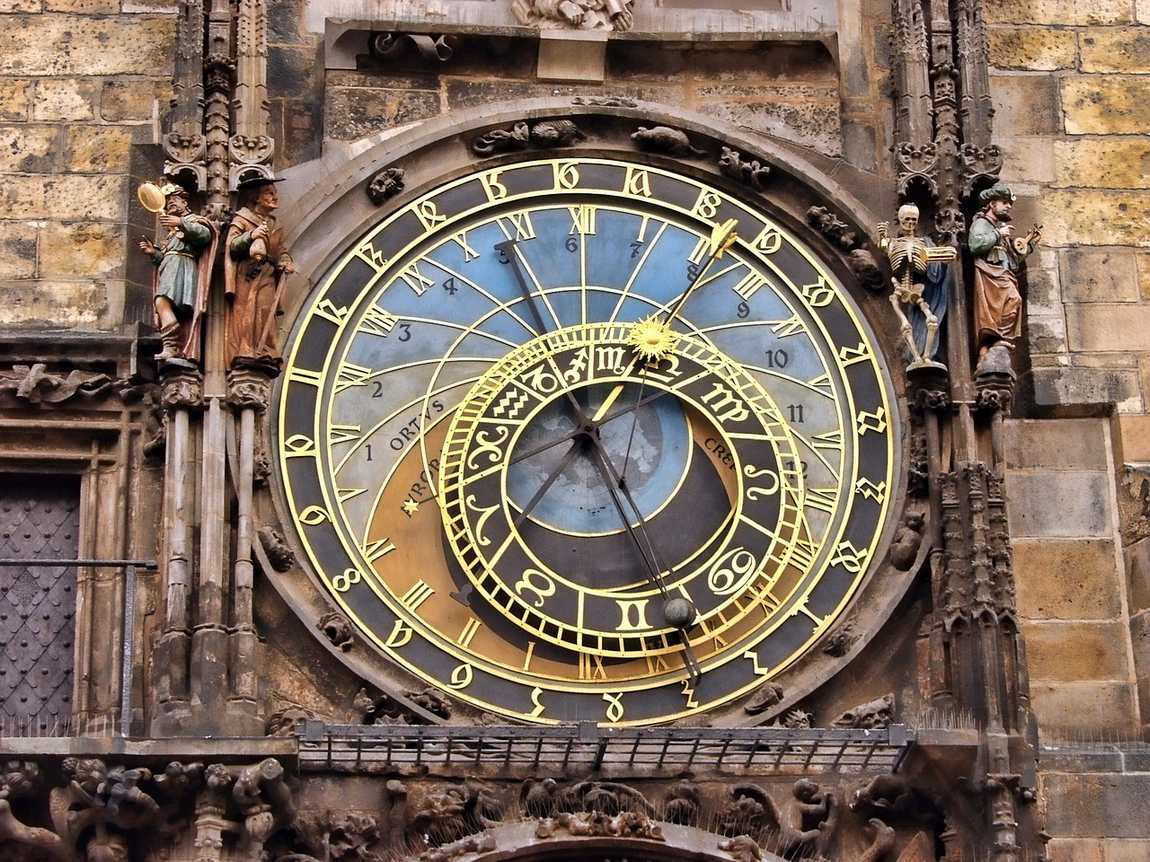 Photo:https://pixabay.com
Photo:https://pixabay.com
What is the Prague Astronomical Clock Known for?
Prague's astronomical clock, known locally as Prague Orloj, is an iconic historical timepiece and a treasured spectacle in the heart of Europe. Installed in 1410, this medieval clock proudly holds the title of the oldest astronomical clock still operating today. For centuries, it has kept time and displayed celestial movements with remarkable precision.
Key Features:
- Medieval Engineering: Displaying the ingenuity of Gothic science, the clock's mechanisms are a marvel, showcasing the Sun's and Moon's alignment in the sky.
- Astronomical Dial: At its face, the clock boasts an astronomical dial representing the position of various celestial bodies.
- Calendar Disc: Featuring a calendar disc below the dial provides a medley of saints and notable times of the year.
- Animated Figures: Engaging for young visitors, every hour, the clock comes alive with the procession of the Twelve Apostles, enticing spectators with a charming display.
- Cultural Symbol: The clock embodies Prague's rich history and continues to fascinate with its blend of technology, art, and tradition.
Visitors, especially families with children, are captivated by the magic and mythology in the clock's past. It tells a story extending beyond timekeeping, inviting all who visit Prague to experience a moment of living history. The Prague Orloj is not just a clock but a portal to the past, a centerpiece of Czech culture, and a testament to humankind's enduring craft and curiosity.
Why It Might Be Interesting for Kids
Prague's famous astronomical clock is a storytelling timepiece that offers a captivating blend of history, art, and technology. It can be just as delightful for children as it is for adults. Here are compelling reasons to make this historical gem part of your family itinerary:
- Visual Spectacle: The clock comes alive with moving sculptures every hour, making it a thrilling watch. Children, especially those aged between 5 and 12, often find the animated figures of the Apostles fascinating as they parade by the windows.
- Astronomical Adventure: It's a clock and a portrayal of the universe. The astronomical dial displays the positions of the sun and moon, providing a fun way for youngsters to learn about celestial movements.
- Medieval Ingenuity: The clock's intricate mechanics are a lesson in medieval engineering. Older children and teenagers with a penchant for mechanics might be inspired by the clockwork, seeing firsthand how technology has evolved.
- Artistic Discovery: With the clock's vivid illustrations and Gothic architecture, it's like an outdoor art gallery that kids can appreciate, showing them the intersection of art and functionality in a public space.
- Tale of Legends: The clock is shrouded in myths and legends, including one about its creator being blinded to prevent him from replicating his masterpiece, adding an element of storybook intrigue to the visit.
Families will find this historic timekeeper educational and an enchanting fairy tale embodied in gears and dials. Its allure can captivate children of all ages. Still, it resonates particularly with those old enough to appreciate a good story and young enough to marvel at its mechanical dance.
History and Background
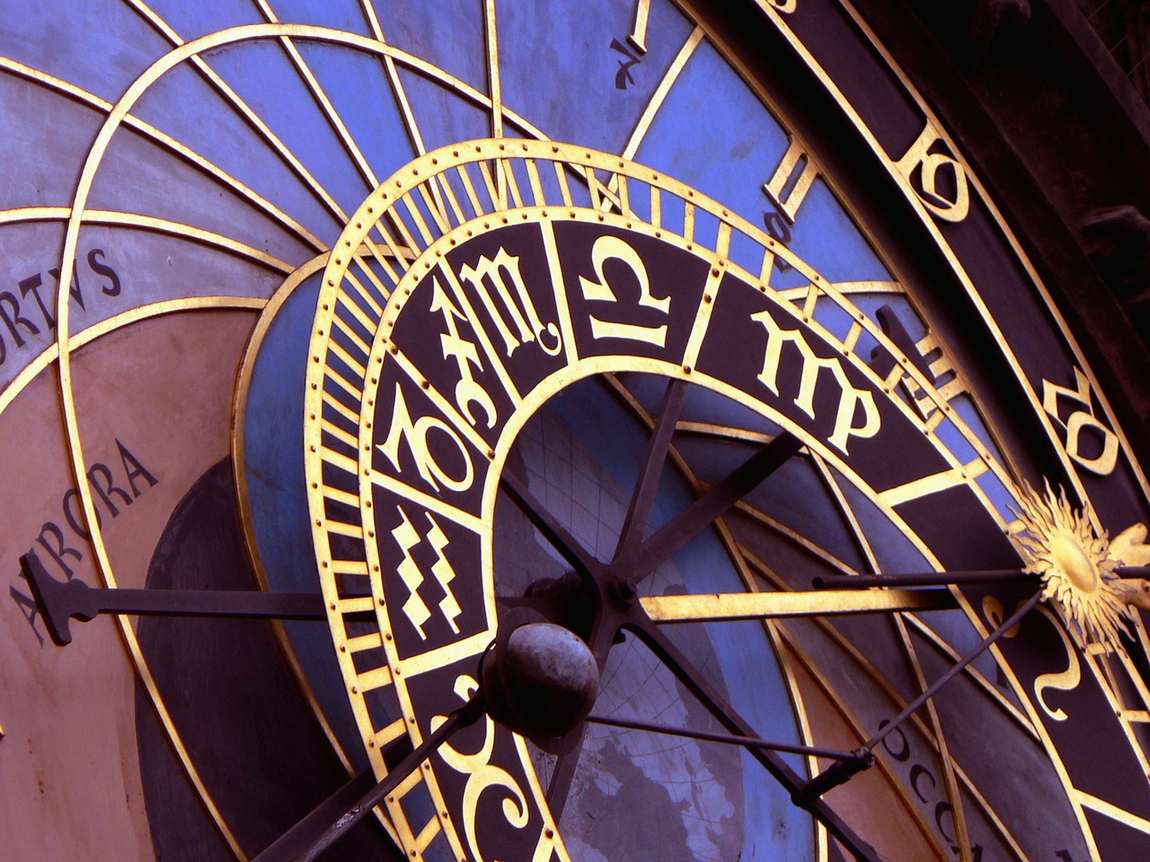 Photo:https://pixabay.com
Photo:https://pixabay.com
Prague's Astronomical Clock, a treasured timepiece set in the heart of the city's Old Town Hall, offers a window into the ingenuity of medieval craftsmanship. This historical marvel, not only a keeper of time but also a storyteller of astronomical positions, has intrigued families and visitors of all ages for over six centuries.
Origins and Creator
The astronomical clock, or Orloj, as known by the locals, was first installed in 1410, making it one of the oldest clocks of its kind still operating. Clockmaker Mikuláš of Kadaň, in collaboration with Jan Šindel, a mathematics and astronomy professor, brought this medieval masterpiece to life. With its intricate design, it doesn't only tell the time. Still, it provides the date, shows astronomical and zodiacal information, and, best of all, provides some theatre for its viewers on the hour, every hour. but also the motion of celestial bodies; the clock has become a symbol of Prague's rich history and cultural heritage.
Noteworthy Restorations
Over the centuries, the Orloj has undergone several restorations to preserve its function and beauty. One significant restoration occurred after damage caused during the Prague Uprising of 1945. The clock was meticulously repaired by renowned Czech artist Vojtěch Sucharda, among others, in the years following the end of World War II. During the last renovation, an electric clock operated since 1948 was replaced by an original mechanism from the 1860s. Each repair and restoration attempt has aimed to maintain the clock's historical accuracy while ensuring its endurance for future generations.
Significant Events
Marked by various historical events, it has seen both celebration and strife. One of the most notable events in its history occurred during the Prague Uprising, where the clock suffered damage. Yet, the clock's survival and continual operation signify Prague's resilience and steadfast dedication to conserving its legacies. The frequent crowds gathered to witness the hourly show testify to the fascination and admiration that the Orloj still elicits.
Throughout its existence, the Astronomical Clock has kept time and captured the imagination of both young and old. Its ability to enchant and educate families solidifies its position as an emblem of Prague's storied past and enlightened artisanry.
Architectural Details of the Astronomical Clock in Prague
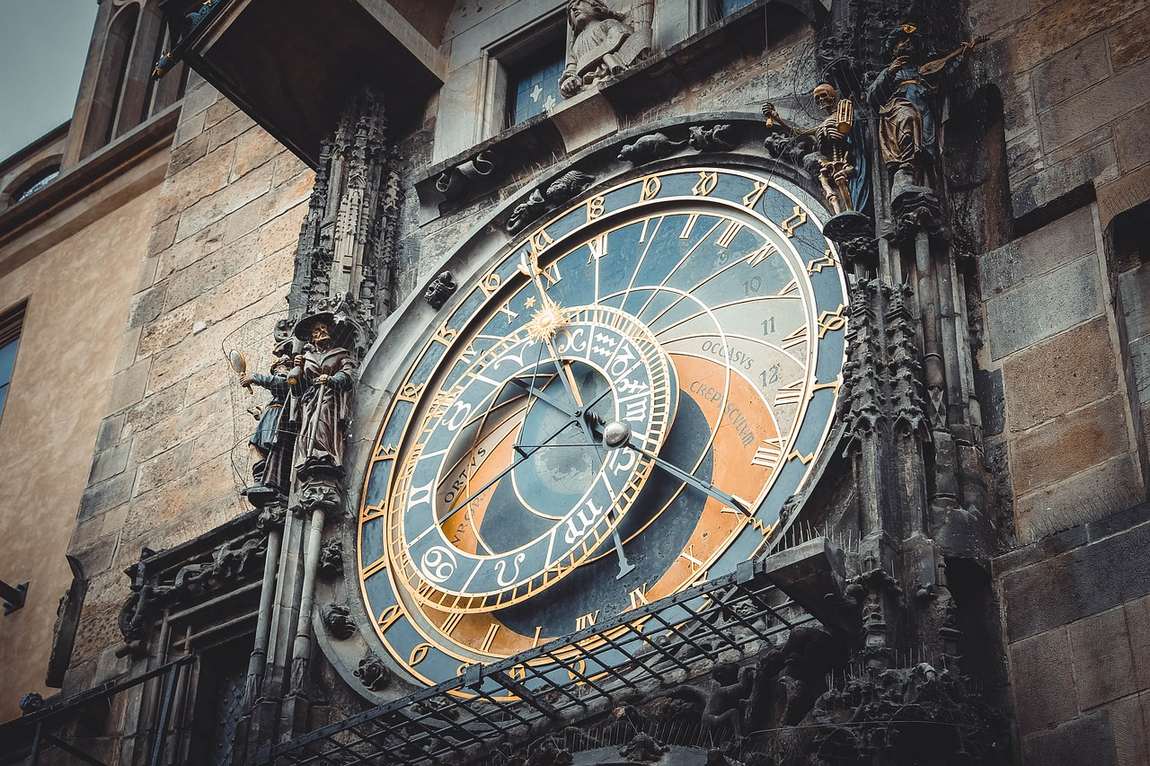 Photo:https://pixabay.com
Photo:https://pixabay.com
The Prague Astronomical Clock is a marvel of timekeeping and a masterpiece of Gothic architecture. Its intricate design and elaborate decorations have captivated visitors for centuries.
Clock Tower and Design
The Old Town Hall Tower, home to the Prague Astronomical Clock, stands proudly in Staroměstské náměstí. The tower's design integrates a mechanical astrolabe crucial for the clock's astronomical functions. In addition to the astrolabe, the clock features an astronomical dial representing the position of the sun and moon in the sky and a calendar dial with medallions that depict the months.
Animated Figures
A captivating show enchants the audience each hour as animated figures spring to life. These figures include allegories of Vanity and Greed, a stark reminder of human foibles. The skeletal figure of Death tolls the bell to mark the passing of time, capturing both the imagination and attention of children and adults alike.
Sculptures of the 12 Apostles
During the hourly spectacle, a highlight is the procession of the 12 Apostles, who emerge from trapdoors to bless the assembled crowd. These sculptures add spiritual significance and a dynamic visual experience to the clock tower, showcasing the blend of mechanical ingenuity and artistry.
Astronomical Features
 Photo:https://pixabay.com
Photo:https://pixabay.com
The Prague Astronomical Clock is not just a historical treasure; it's a complex orchestration of celestial motifs that tells more than just time. Its astronomical features provide a captivating representation of the universe according to 15th-century science.
Mechanism and Dials
At the heart of the clock's astronomical features is a complex mechanism that drives multiple dials, each serving a unique function. Two main dials dominate the facade: the astronomical dial, which displays various astronomical details, and the calendar dial, adorned with artwork representing the months.
Calendar Dial by Josef Mánes
The newest part of the clock, dating from 1865, is the work of renowned Czech painter Josef Mánes. Each segment of the calendar dial showcases the months of the year, vividly painted to include zodiac signs and scenes from rural life. It reflects the changing seasons and connects the heavens to the earth in a cycle of annual rituals.
The Astronomical Dial
The astronomical dial is a visual masterpiece that tracks celestial movements. Composed of a blue outer circle representing the sky and a darker inner part symbolizing the night, it features a sun and a moon that make their journey across the dial, reflecting their real-time position in the sky. Zodiac signs on the dial offer insight into the ecliptic, the path the sun follows through the stars.
Time Measurement
Time is measured in several ways by the astronomical clock. Not just the current time in Central European Time but also Old Czech Time, Babylonian Time, and Sidereal Time, which relates to the stars. The sun on the clock's arm circles around, indicating daytime and nighttime, while a small golden star marks the sidereal time. This concept references the Earth's rotation relative to the star-filled universe beyond.
Cultural Significance
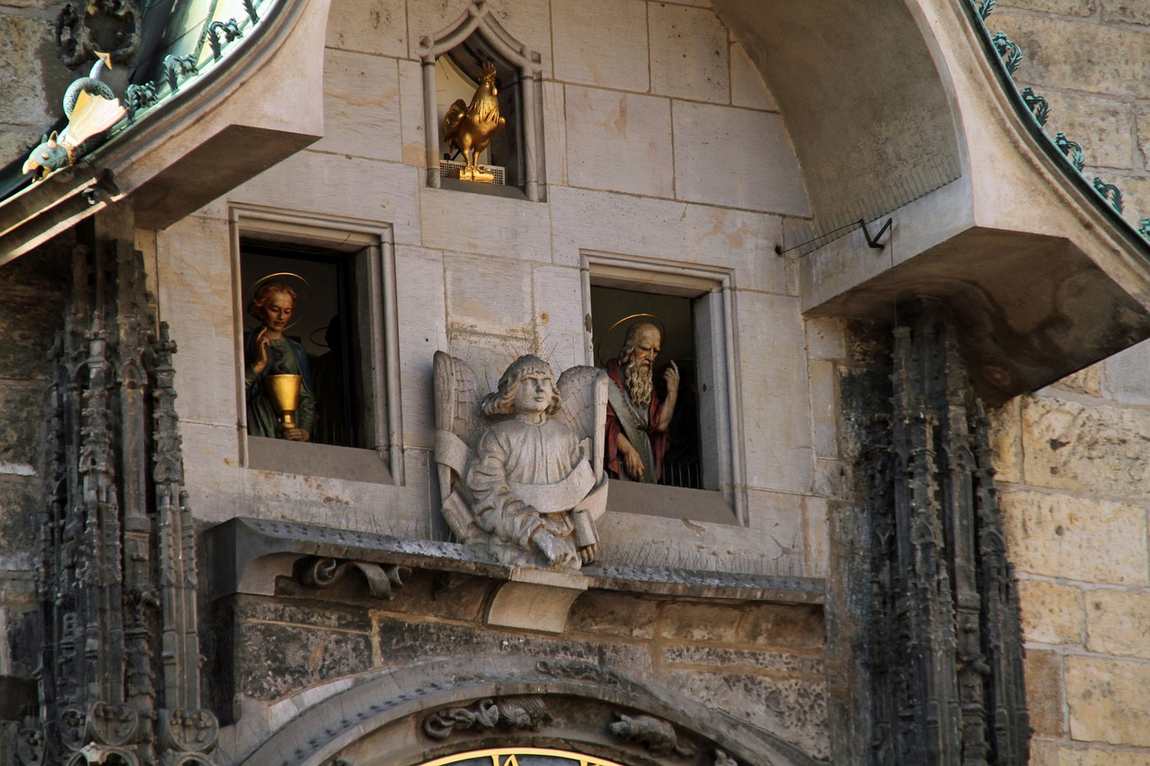 Photo:https://pixabay.com
Photo:https://pixabay.com
The Prague Astronomical Clock, a treasured emblem within the Czech Republic, holds a tapestry of stories that echo the nation's rich history. It signifies more than mere timekeeping; it embodies the cultural heartbeat of Prague, resonating with centuries-old traditions and artistic splendor.
Mythology and Folklore
Legends envelop the Prague Astronomical Clock, casting a mystical aura around the historical timepiece. Folklore whispers tales of the clockmaker, trapped by the jealous Prague councilors who, fearing his recreation of such marvel elsewhere, blinded him. Spurred by this torment, the master is said to have sabotaged the clock, cursing it with dysfunction should another attempt to mend it. The clock stands proudly in the Old Town Square, not just as machinery but as a reminder of the city's storied past.
Another intrigue pertains to the figure of the Miser, which animates every hour, symbolizing greed and vanity—an evergreen warning against such vices. Visitors gathering with bated breath to witness the procession of the Apostles are also regaled with the lesson of the Vanity figure admiring himself in a mirror, bespeaking caution in the pursuit of superficial delights.
Artistic Contributions
The artistry of the Astronomical Clock manifests in the intricate astronomical dial and calendar. The original medieval dial weaves scientific precision with astrological lore. At the same time, the calendar plate beneath, created by the revered Czech painter Josef Mánes, reflects the months through pastoral scenes and zodiac signs, each stroke narrating the Czech Republic's seasons and traditions.
In the 20th century, artist Vojtěch Sucharda left his mark during restoration work, contributing sculptures and woodcuts that incorporated modern sensibilities into the clock's historical tapestry. They stand as silent testimonials to the clock's ongoing story — one of careful preservation and renewal; just as Charles University has been a custodian of knowledge, the clock remains an enduring custodian of Prague's artistic heritage.
The Orloj's Symbolism
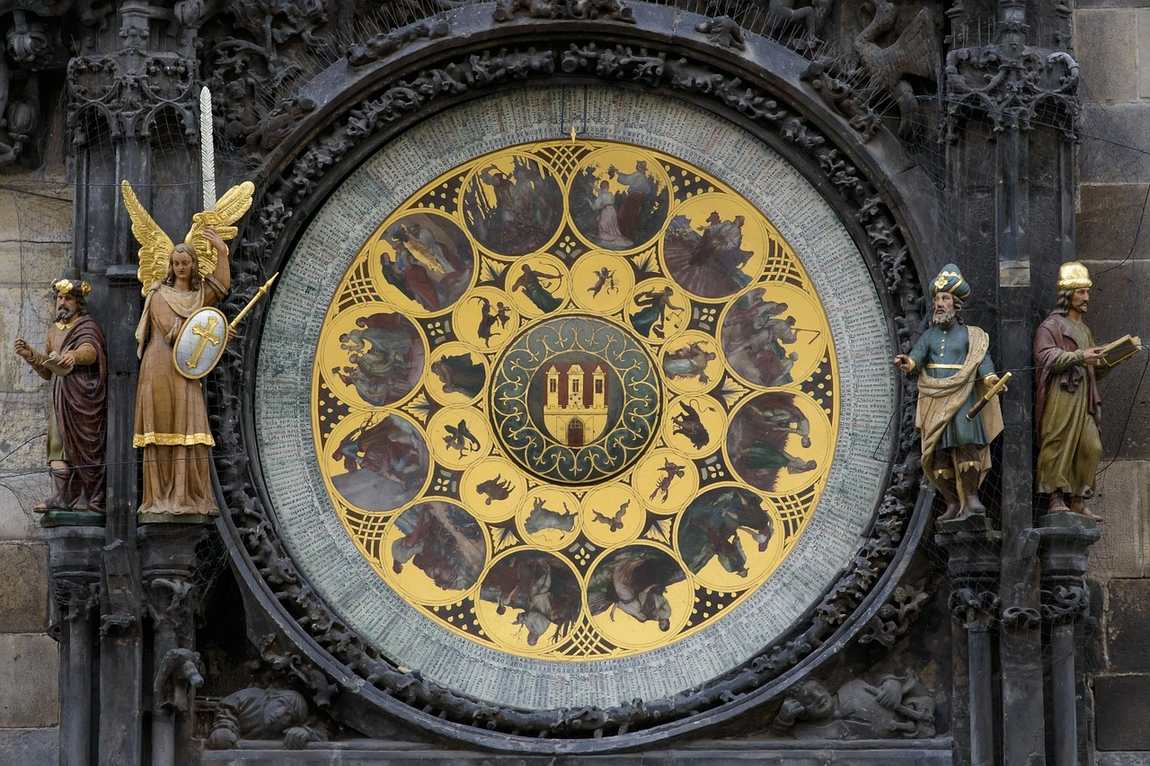 Photo:https://pixabay.com
Photo:https://pixabay.com
The Prague Astronomical Clock, known as the Orloj, is steeped in a wealth of symbolism that captures both the scientific ingenuity and the medieval worldview of its creators.
Apostles and Allegories
At the heart of the Orloj's symbolism are the 12 Apostles, who make their procession every hour, symbolizing faith and continuity. Each apostle is presented with attributes significant to their individual stories and the broader Christian narrative. Visitors often marvel not just at the apostles themselves but also at the allegorical figures that flank the clock. These include Vanity gazing into a mirror, representing self-admiration; Avarice holding a bag of gold, embodying greed; Death, a skeleton that strikes the time, serving as a reminder of life's impermanence; and a Turk shaking his head in defiance, symbolizing lust and earthly pleasures.
Astronomical Symbolism
The astronomer, chronicler, and philosopher—depicted as statues on the outer edges of the clock—emphasize the Orloj as a nexus of education and wisdom. They represent the empirical pursuits that guide human understanding of the universe in which they live. With its zodiacal ring, the clock showcases the celestial movements and speaks to humanity's perennial quest to comprehend time and cosmology. Above the clock, a golden rooster crows to signal the hour’s end, drawing attention to the relentless march of time and the inevitability of a new day. The presence of an angel with a trumpet announces transcendent celestial events, bridging the terrestrial and the divine.
Each feature of the Orloj tells a story—a tableau where astronomy and allegory align to remind passersby of the grandeur and the moral compass that guided the era of its creation.
Best Time to Visit
Visiting the Prague Astronomical Clock with children offers a magical glimpse into history and astronomy that delights all ages. When planning a family trip to this iconic timepiece, timing is critical for an unforgettable experience.
Weekday Mornings:
Weekday mornings are ideal for a more relaxed visit with the little ones. The crowds are usually thinner, providing a stress-free environment for families. This time allows for up-close views of the clock without jostling for space.
- Monday: 11 AM to 7 PM
- Tuesday to Sunday: 9 AM to 7 PM
Apostles' Procession:
Every hour on the hour, the clock puts on a captivating show called the "Walk of the Apostles," where figures of the Apostles move, much to the fascination of young minds. To catch this spectacle:
- Daily Shows: From 9 AM to 11 PM (starting at 11 AM on Mondays)
Tower Visits:
For a panoramic view of Prague, the clock tower is open:
- Monday: 11 AM to 10 PM
- Tuesday to Sunday: 9 AM to 10 PM
Children typically marvel at the view, and early evenings are an excellent time to gaze over the cityscape as the lights begin to twinkle.
Family Tip: Early risers are in for a treat, as the first hour of opening often comes with a special incentive – potentially a discount on entry fees to the historic interior.
Best Days to Visit:
Mid-week visits often ensure less hustle, especially since many travelers arrive on weekends.
Remember, the Astronomical Clock is mesmerizing around the clock and free to enjoy from the square anytime — a perfect setup for families to delight in Prague's historical charm.
How Long Does It Take to Visit?
Visiting the Prague Astronomical Clock is a delightful experience that can typically be absorbed in small pockets of time, making it ideal for families on the go. A full appreciation of the astronomical clock's intricacies and the engagingly brief mechanical show, known as "The Walk of the Apostles," takes place every hour and lasts 45 to 60 seconds.
To get the whole experience, families might consider arriving a few minutes earlier to secure a good viewing spot, as the area can become quite crowded. With children in tow, the wait adds an air of anticipation, turning the hourly spectacle into a moment of magic.
- Viewing Time: Under 5 minutes
- Arrival: 10-15 minutes prior recommended
- Total Duration: 15-20 minutes
The interior of the historical clock, a separate venture, has specific visiting hours. They usually operate from 11 AM to 7 PM on Mondays and from 9 AM to 7 PM from Tuesday to Sunday. Allocating around 30 minutes to explore the interior should suffice for a thorough visit without over-tiring younger family members.
The Astronomical Clock Tower also offers intriguing insights, with opening hours similar to the historical interior but extended to 10 PM. The tower visit is an add-on for those wishing to extend their family adventure, providing panoramic views of Prague. It is generally achievable within 30 minutes to 1 hour.
Here's a simple breakdown for families to plan their visit:
| Activity | Duration |
| The Walk of the Apostles | <5 minutes |
| Interior Visit | ~30 minutes |
| Tower Visit | Additional 30m to 1h |
Reasons to visit beyond the clock's medieval allure include its spectacular craftsmanship and historical significance — after all, it's one of the oldest astronomical clocks still operating! Understanding the clock's functions and legends could be a stimulating lesson for curious minds of all ages.
Is Prague Astronomical Clock Worth Visiting?
The Prague Astronomical Clock, housed in the Old Town Hall, is a marvel that captures the imagination of all ages. Its intricate craftsmanship and historical significance make it a must-see for families exploring the magical city of Prague.
For curious minds, the clock is not just an artifact; it's a storybook etched in time, showcasing medieval engineering. It strikes a chord with children fascinated by gears and mechanisms, especially during its famed hourly show. This event presents a prime opportunity for kids to watch the procession of the Apostles, a delight that merges education with entertainment.
Here's what makes the astronomical clock a family-friendly attraction:
- No entry fee: It's an accessible experience, as the clock is viewable from the Old Town Square.
- Educational value: Children can learn about timekeeping history and medieval science.
- Visual spectacle: The moving figures and astronomical dial keep young ones captivated.
For those needing a break from the sensory splendor, nearby cafes offer a view of the clock, allowing for a restful gaze upon the Old Town Square's centerpiece. Prague Astronomical Clock is worth visiting for its status as the oldest working astronomical clock, cultural importance, and ability to fascinate and educate in equal measure.
Encourage tiny travelers to spot the zodiacal ring or identify the figure of Death ringing his bell. These playful interactions foster a fun and enlightening family outing, ensuring the legendary clock's hands etch memories as lasting as time.


